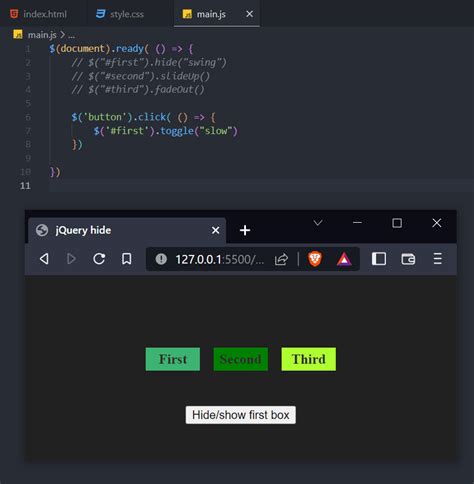In Vue.js, you can manipulate slot elements in child components using the $attrs variable and inheritAttrs: false. Let's take a look at an example.
Suppose we have a component named Answer.vue that has a named slot:
<!-- Answer.vue -->
<template>
<div class="w-[70%] mx-[15%] flex items-center justify-center">
<button v-bind="$attrs" class="p-3 rounded-3xl shadow-md font-bold m-4 px-10 border-2 border-grey-800 hover:border-black hover:transition-all duration-300">
<!-- Slot content -->
<slot />
</button>
</div>
</template>
<script>
export default {
inheritAttrs: false,
}
</script>
In this example, the Answer.vue component has a named slot called <slot />. We're using the $attrs variable to bind any attributes from the parent component to the button element.
Now, let's create a parent component that uses the Answer.vue component and provides some content for the slot:
<!-- ParentComponent.vue -->
<template>
<div>
<!-- Provide content for the slot -->
<Answer @click="handleClick">
<!-- Slot content -->
<template #default>
This is the default slot content.
</template>
</Answer>
</div>
</template>
<script>
export default {
methods: {
handleClick() {
console.log('Button clicked!');
},
},
}
</script>
In this example, we're using the Answer.vue component and providing some content for the slot using the <template #default> syntax.
Conditional Rendering of Slots
Sometimes, you might want to conditionally render a slot based on certain conditions. You can use the $slots object to detect which slots have been applied to the component.
For example, let's create a component that only renders its default slot content if there is actually some content provided:
<!-- ConditionalSlot.vue -->
<template>
<div v-if="$slots.default">
<!-- Slot content -->
<slot />
</div>
</template>
In this example, we're using the $slots object to detect whether the default slot has been applied. If it has, we render the slot content; otherwise, we don't render anything.
Detecting Changes in Slot Content
In Vue.js, a component should be re-rendered when the slot content changes. However, this might not always happen automatically. In some cases, you might need to use a computed property or lifecycle hook (like beforeUpdate or created) to detect changes in the slot content.
For example, let's create an error-message component that hides until it has some slot content to show:
<!-- ErrorMessage.vue -->
<template>
<div v-if="hasSlotContent">
<!-- Error message -->
{{ errorMessage }}
</div>
</template>
<script>
export default {
data() {
return {
hasSlotContent: false,
errorMessage: '',
}
},
methods: {
checkForSlotContent() {
// Check if the slot content has changed
let checkForContent = (hasContent, node) => {
return hasContent || node.tag || (node.text && node.text.trim());
}
return this.$slots.default && this.$slots.default.reduce(checkForContent, false);
},
},
beforeUpdate() {
// Update the `hasSlotContent` property when the slot content changes
this.hasSlotContent = this.checkForSlotContent();
},
created() {
// Initialize the `hasSlotContent` property when the component is created
this.hasSlotContent = this.checkForSlotContent();
}
}
</script>
In this example, we're using a computed property and lifecycle hooks to detect changes in the slot content. When the slot content changes, we update the hasSlotContent property and re-render the component accordingly.
I hope this helps! Let me know if you have any questions or need further clarification.
